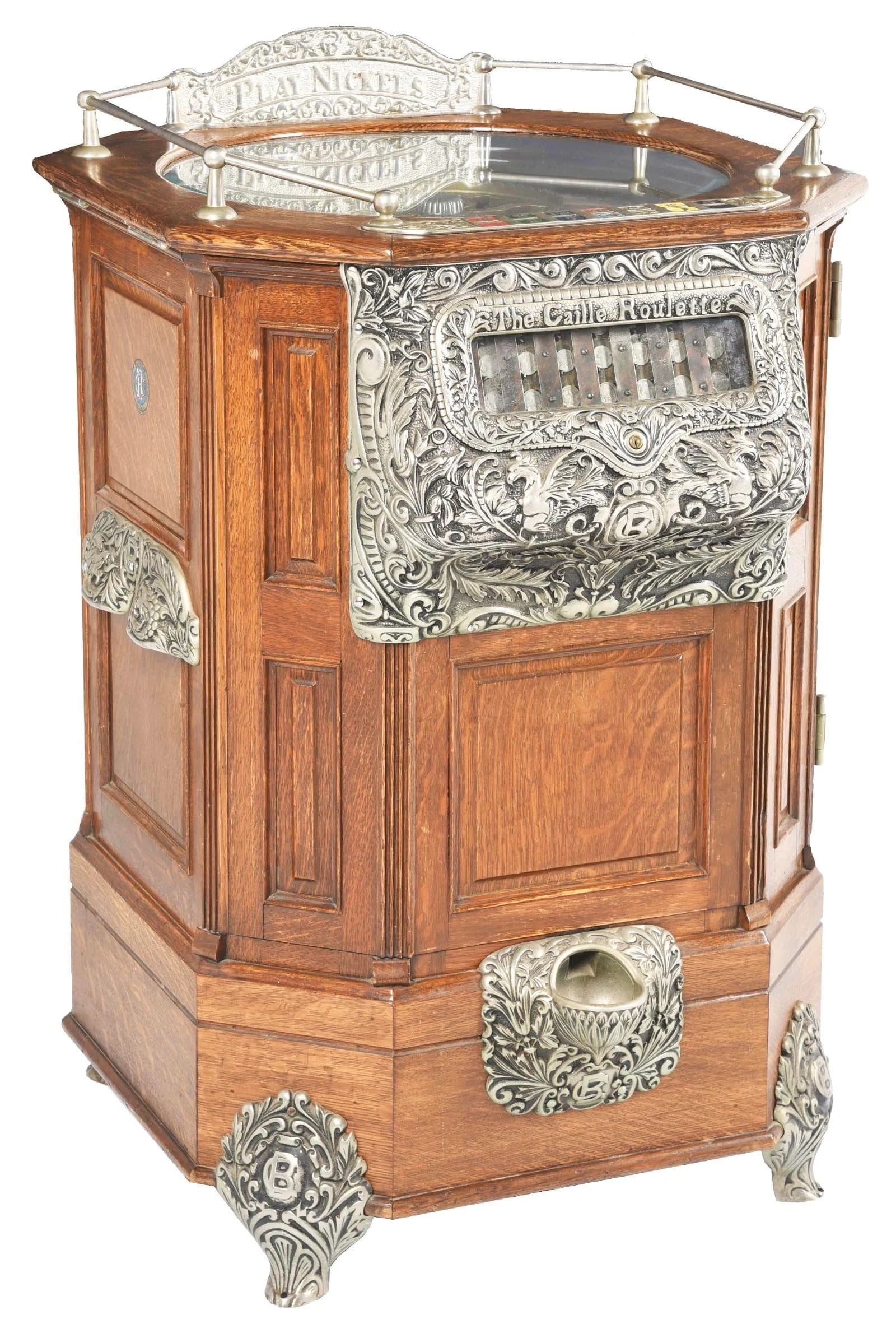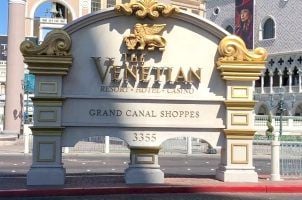Slot Machine That’s Older Than Las Vegas Sells for $248K
Posted on: November 18, 2022, 08:05h.
Last updated on: November 18, 2022, 10:52h.
It may not come with bombastic bonus features or explosive video cutaways, but it’s a lot more elegant than a modern slot machine, and it just generated a $248,000 payout. Because that was the winning bid for a Caille Bros. 5-cent Roulette floor-model slot machine from 1904, sold at by Morphy Auctions earlier this month.

Set in a rich quartered oak cabinet with nickel-plated iron castings and seven coin-slots, the piece was the star of the show at the auction of coin-operated antiques in Denver, Pennsylvania. The machine, which is in full working order, was once part of the Las Vegas Club’s collection, until it was acquired by a private buyer in the 1970s.
The machine is actually a year older than Las Vegas, which was founded as a city in 1905.
After inserting their nickel, users would crank a lever at the side that would set a wheel spinning on the top before releasing a ball.
The machines are exceedingly rare, especially in this condition, said Morphy’s CEO Tom Tolworthy, a coin-op expert.
“Original machines of this caliber do not come to auction often, and this one is the finest original Caille Roulettes we have seen. It deserves the description ‘best of the best,’” he said.
Card Mechanics
The concept of a gambling machine was only around 13 years old when Caille produced its handsome roulette slot.
Stittman and Pitt of Brooklyn, New York can lay claim to inventing the first in 1891. This used five drums, each with ten images of playing cards. Players would insert a nickel and pull a lever in the hope of making a high-ranking five-card poker hand from the 50 cards available.
The removal of two cards, the ten of spades and jack of hearts, made the mechanics of the game easier, while conveniently increasing the house edge.
Because there was no direct payout mechanism, winnings were collected at the bar, usually in the form of drinks, cigarettes, and cigars. The prizes on offer were completely down to the discretion of the host establishment.
Liberty Bell
In 1898, German mechanic Charles Fey of San Francisco designed the Liberty Bell, the blueprint of the modern slot machine. Fey streamlined and simplified Stittman and Pitt’s concept, reducing the deck of cards to five symbols: horseshoes, diamonds, spades, hearts, and a Liberty Bell, all still used today.
By cutting the number of reels from five to three, Fey greatly simplified the number of possible payout combinations, which allowed him to include a workable payout mechanism.
Behold, the modern slot! The Liberty Bell was wildly popular, and the mechanics of slot machines changed very little until the introduction of electromechanical slots in the 1960s and the video slot in the 1970s.
Related News Articles
Jackpots: Caesars Palace Slots Stay Loose Over Holidays, Hit for $503K
Venetian Slot Outage NOT a Cyberattack, Las Vegas Casino Insists
Racecar Driver Christy Georges-Barnett Wins $1M on Vegas Slots
Most Popular
Las Vegas Overstated F1 Race’s Vegas Impact — Report
Vegas Strip Clubs Wrestle in Court Over Animal Names
Most Commented
-
End of the Line for Las Vegas Monorail
— April 5, 2024 — 90 Comments -
Mega Millions Reportedly Mulling Substantial Ticket Price Increase
— April 16, 2024 — 6 Comments -
Long Island Casino Opponents Love New York Licensing Delays
— March 27, 2024 — 5 Comments -
Nearly Abandoned Mall Outside Vegas Soon to Have Only One Tenant
— March 12, 2024 — 5 Comments
















No comments yet